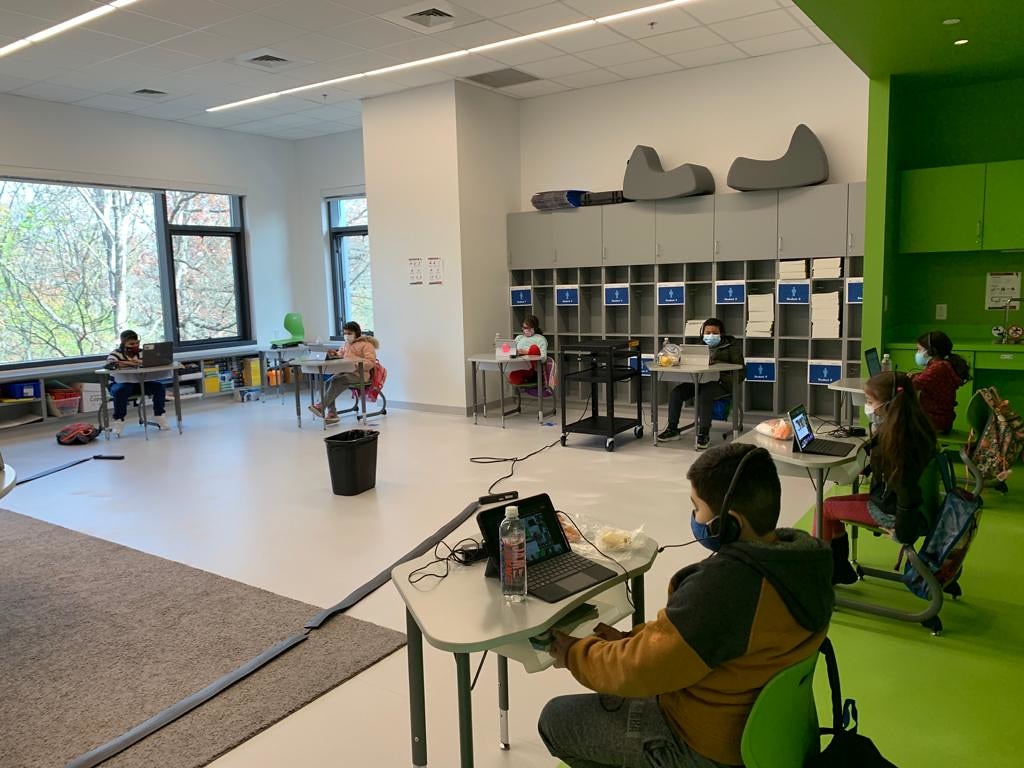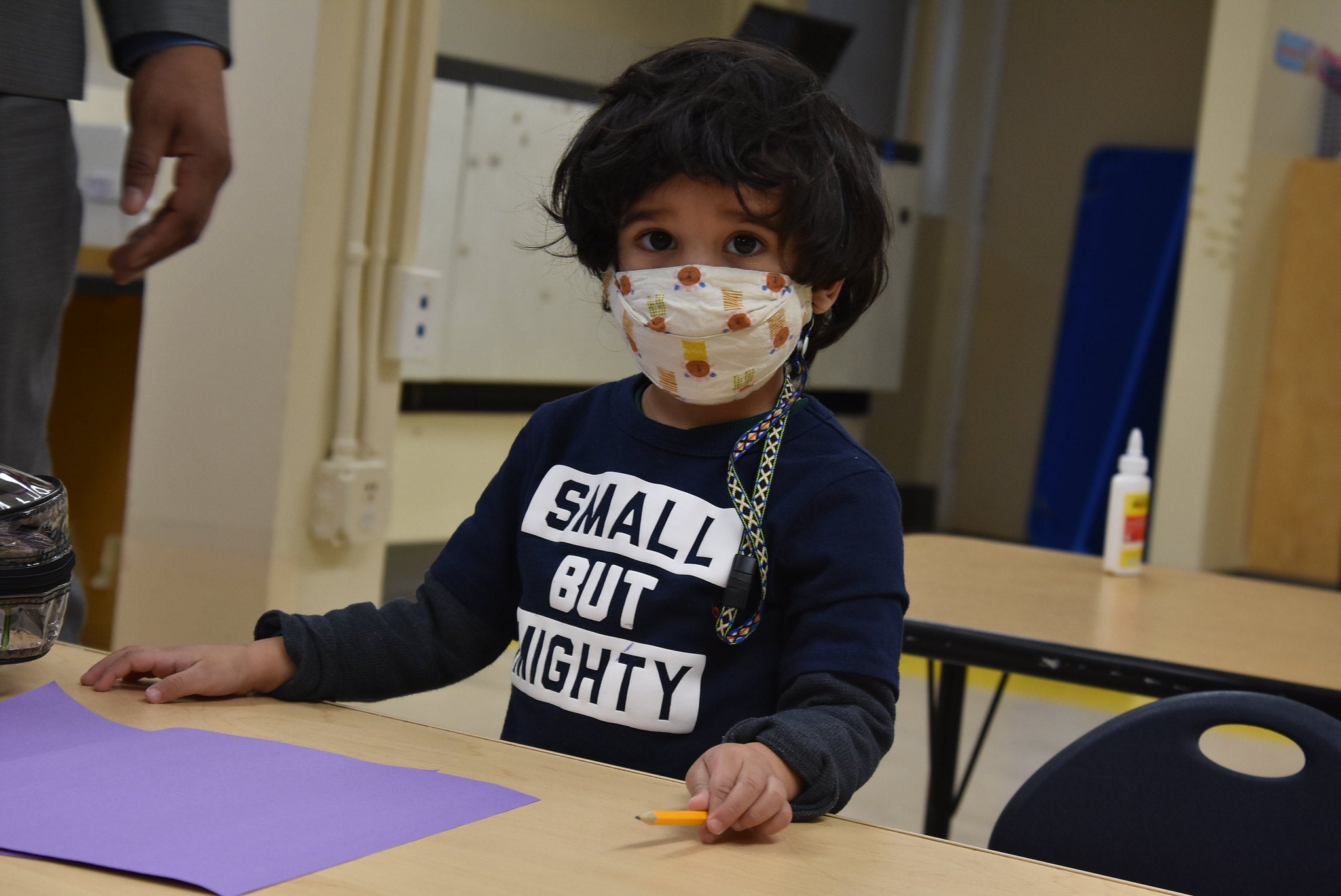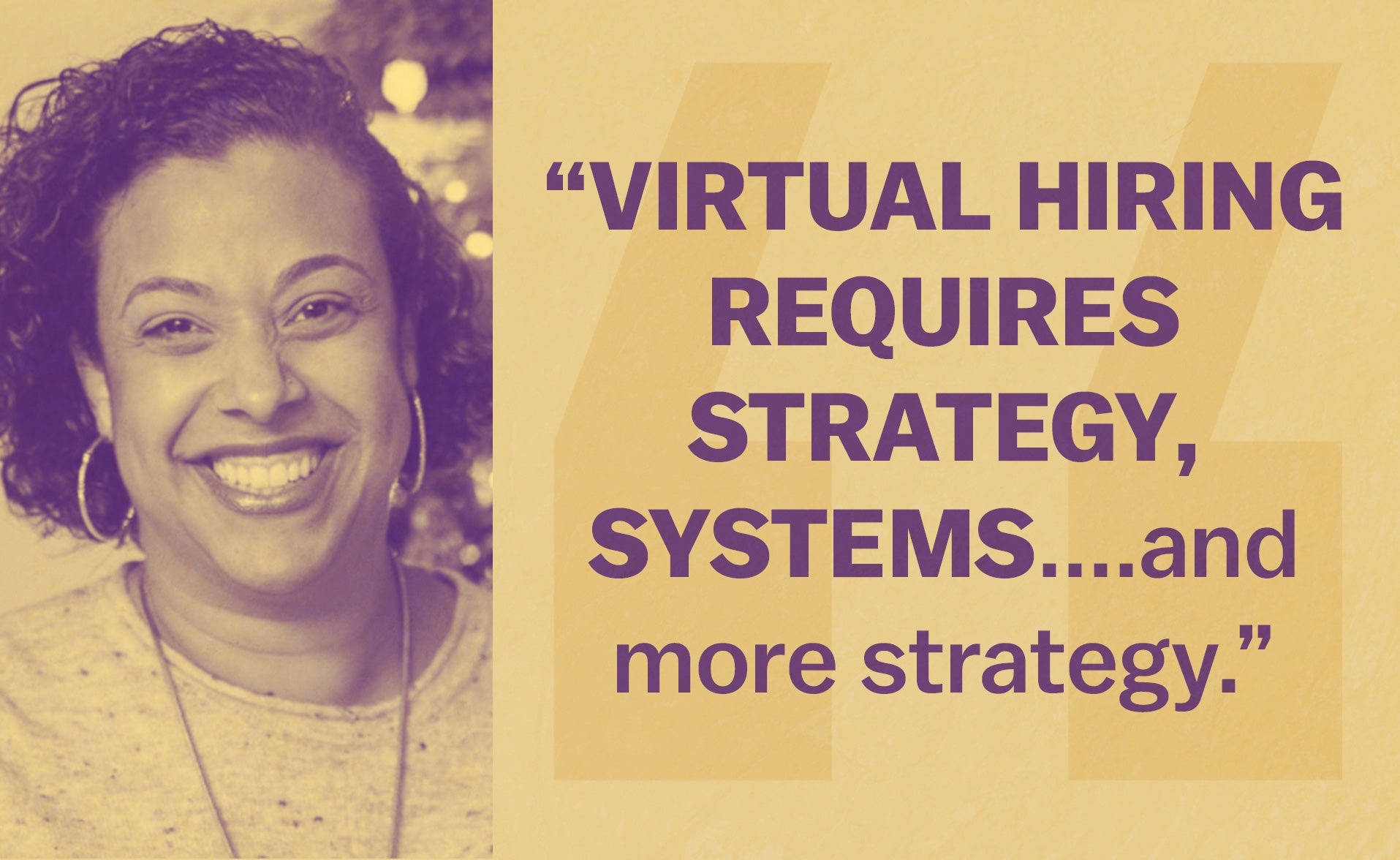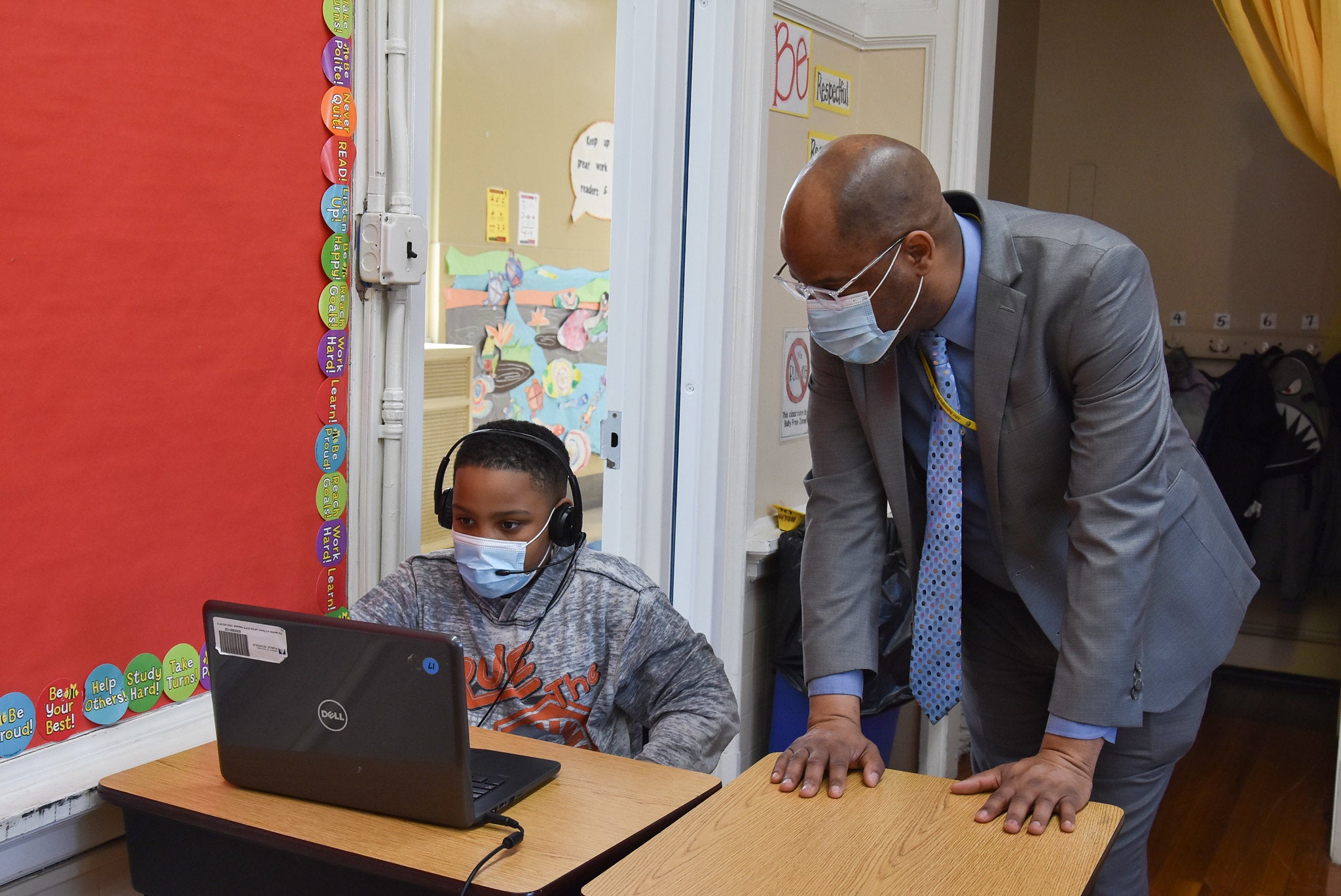The COVID-19 pandemic has upended a great number of systems and processes in the K-12 education system, including the hiring of principals and school leaders. More than a year into the pandemic, school districts are once again facing a remote hiring season. What can we learn from their experience last year? And what might be improved in the virtual hiring process for both district leaders and job candidates going forward?
The Wallace Blog caught up with Maggie K. Thomas, deputy chief of talent development at the District of Columbia Public Schools, to investigate the challenges and possibilities of remote hiring based on the district’s emergency pivot to virtual operations last year. Despite all the technological and other difficulties facing it, the district school system was able to fill all its school leader slots well before the fall 2020 school term began. The following interview has been edited for length and clarity.
What kind of strategies did DCPS use to effectively carry out virtual hiring amidst the challenges of the pandemic?
Virtual hiring requires strategy, systems....and more strategy. The pandemic has been a great opportunity for us to strategically think more creatively around how each stage of our interview process effectively assesses our core values and necessary competencies for each role. For example, we had to re-imagine the role of performance tasks so that they would elevate a candidate's awareness and intentionality around equity-centered leadership. Similarly, to assess candidates’ ability to meet the needs of today's climate, we had to purposefully craft questions that encourage candidates to explicitly describe how they have navigated change, ambiguity and socio-emotional challenges in their previous roles.
We also leaned into the convenience of virtual hiring by leveraging cross-team collaboration throughout the interview process. In the instances in which we collaborated with our equity team, our chiefs of schools, and our strategy and performance management teams—to have them serve on a panel, craft questions and/or review performance tasks—the different perspectives helped to better support candidate selection.

Speaking even more practically, how did you go about hiring principals virtually?
One of the pieces that can easily be overlooked is the need to be intentional about preparing the technology needed to execute virtual interviews. While the world was quickly transitioning into working from home and getting more accustomed to using tech tools like Zoom and Microsoft Teams, we were surprised at some of the small snags that our team had to uncover and plan around (think: breakout rooms, waiting rooms, mute buttons). To remedy this, we took a sandbox approach where our team leads set up Zoom rooms and worked through any of our anticipated hiccups. This made our first and subsequent interview days run so much smoother. We sent a comprehensive email to interviewers a week in advance that included stepper documents and videos for using Zoom, a candidate profile, all of the necessary rubrics for the interview, and supports-in-place for the actual day.
On the candidate side, we also learned that they needed guidance and coaching on bringing their best self to a virtual interview space. Whereas cues for dress, body language and even background were either not applicable or normed in-person, there was a need to establish best practices for virtual settings. Things like posture, lighting and position in front of the camera quickly became coaching points after feedback from our interviewers suggested that candidates looked disinterested or uninvested. What we found was that some candidates were taking a more relaxed approach to their virtual interviews and abandoning tried and true practices that would be more commonplace in person. Helping our candidates to envision how they would be received on the other end of a screen provided them with the necessary perspective to change their approach.
How about the virtual onboarding process?
Our virtual onboarding for principals and new principals was successful, albeit very different from orientations in years past. One of the unique challenges we faced, and are planning around for the summer ahead, is the appropriate design for content delivery and engagement. For our New Principal Orientation, we have eight days’ worth of critical content from our central services partners that new school leaders need in order to be day-one ready. With that said, it becomes incredibly challenging to retain and apply that information if you're in front of a screen for eight hours per day.
For this year, we're trying to be more intentional about how we design our week, as well as individual days for programming. Early ideas include creating clear, equity through-lines with content facilitators each day and ensuring that we include content connected to the larger district priorities centering on becoming an anti-racist organization that centers on the whole child.
What has been your biggest success, or what are you most proud of?
This past year, in a cross-office teamwork effort, the talent development division was able to secure a $30 million Teacher and School Leader Incentive Program grant from the Department of Education to support educator effectiveness in our highest need schools. This grant—the highest amount awarded to all recipients across the entire nation—will allow DCPS to provide targeted professional development opportunities, performance-based compensation awards, specialized instructional coaching, school leader residencies, and a reimagined novice teacher experience. We are incredibly proud of how we’ll be able to utilize this investment to strategically get, grow and keep teachers and school leaders in our schools most impacted by past and present systemic bias.
Additionally, in terms of key talent milestones, we filled 100 percent of our school leader vacancies shortly after schools closed for the summer and, in an intentional effort to ensure our educator work force is representative of our student population, 18 percent of our new hires were males of color (surpassing the national, 2 percent average). This is our benchmark for success each year, and the team reached this goal amidst a pandemic and a complete shift to virtual processes.
Lastly, one of the things I am also proud of is our team intentionally planning a virtual onboarding process that addressed relevant topics around race, equity, bias and social justice. On our survey data from onboarding sessions, candidates expressed the highest levels of satisfaction with engaging in candid conversations that supported healing and awareness of the contributing factors of the opportunity gap. This is often a conversation that is glossed over and possibly not addressed in some districts, but we were committed to not using the limitations of virtual hiring as an excuse to not address these topics, especially on behalf of our most marginalized students.

What are you still figuring out?
We're still trying to figure out how to bring some of the more intimate components of an interview process into our virtual processes. One of the pieces that we've adjusted thus far is our vision presentation for principals. Prior to this year, candidates submitted a PowerPoint as a performance task and then presented it at the in-person interview. This year, we're planning to have candidates film themselves delivering their vision presentation prior to the virtual interview. Again, we're hoping to have as many opportunities as possible to get a more holistic pulse on our candidates throughout the process given the limitations of a virtual approach.
At a deeper level, another area that we are still figuring out is how to ensure our leadership development programming is thoughtfully aligned to the larger, district-wide priorities. For example, at last year’s Summer Leadership Institute (which is attended by all school and central office leaders), we invited Professor Ibram X. Kendi, author of How to Be an Anti-Racist, as our keynote speaker to share his profound insight on elevating and examining our DCPS value of equity. We want to ensure that all leadership development opportunities connect to these agency-wide PDs so that there is a clear professional learning arc for critical technical matters, as well as for meaningful adaptive matters, such as anti-racism and whole child development.
Finally, for a few quick tips for other districts and school leaders, here’s a condensed shortlist on virtual hiring, based on this conversation.
Preparation is key. Determine your 3-W's as early as possible—who, what and when. Whom do you need to hire and who is an ideal candidate? What will your hiring process entail? When do you need to make your hires by and when should you start vetting candidates?
Invest in sustainable systems. Virtual hiring is here to stay, so evaluate your current platform and investigate whether or not it will continue to work for your organization in the long run. Depending on your budget, consider the feasibility of investing in a platform more tailored to your needs or to an advanced version of whatever you're currently using.
Appeal to people in your target demographic and let them know who you are and what you believe. The workforce is changing and, with the myriad of challenges over the past year, candidates will want to know how your district is adapting and who you are as an organization. That said, as author Simon Sinek argues, “People don't buy what you do; they buy why you do it. And what you do simply proves what you believe.” As districts are trying to compete for top talent across the nation, candidates have to connect to what you believe in order to be inspired to join you on your mission.




